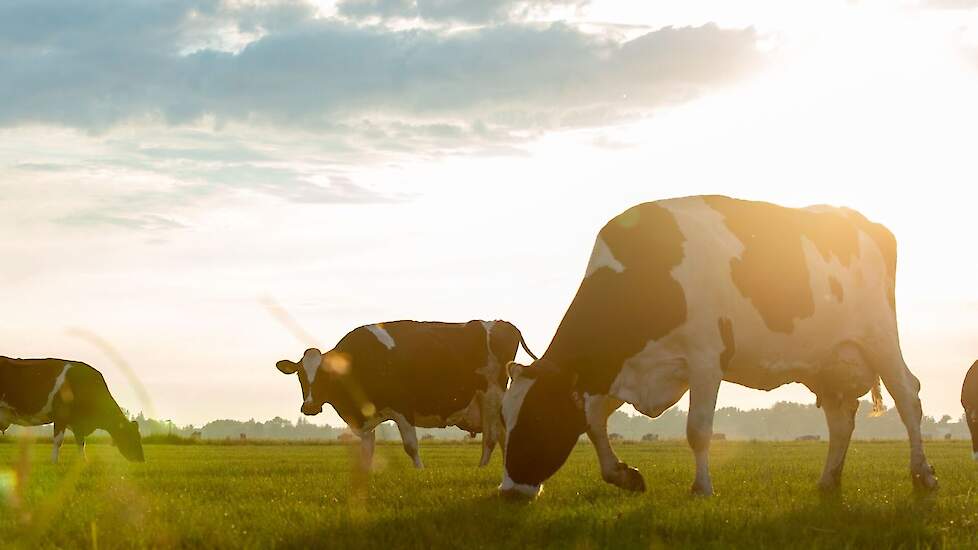The first cows are already happily grazing outside. With the start of the new grazing season, many farmers are wondering how and when to start grazing. It's a good idea for farmers to consider this. How did last year go, and what are the options for this year? Do I want to increase or decrease grazing? What suits me personally? Which grazing system is best for my home, and how will I combine it with automatic milking and/or feeding? These are important considerations for a successful grazing season.
Is successful grazing a matter of a well-balanced (pasture) ration or rather a combination of management and routing? The truth lies somewhere in the middle, with the calculated pasture ration guiding the direction, and the farmer's management determining success. It's important to reassess your needs and options each grazing season. Based on the results, you can develop a grazing strategy and align it with the routing and work routines needed to ensure a successful grazing season. A good sparring partner can help you with this.

Pasture or grazing?
That's a good question. Do we graze for the maximum kilograms of dry matter intake in the pasture, or rather for the grazing premium? It's important to know what the expectations are and whether they align with the farm's needs and possibilities. What's your perspective, and to what extent are you willing to invest time and energy in grazing? It's important to have a clear understanding of what you want to achieve. Is it the highest production, the lowest feed costs, or is only the highest bottom line important? Sometimes it helps to hold up a mirror to gain insight into where the opportunities and challenges lie.
Points of attention for grazing:
• Begin grazing early in the year.
• Start grazing young cattle early; what you learn as a youngster, you'll be able to do when you're older.
• Cows prefer to eat in the early morning and late afternoon.
• Always provide cows with fresh grass to keep them motivated.
• Don't feed cows just before they go out to pasture, as this affects their grass intake.
Fertilization and regulations
De afbouw van derogatie is voor veel melkveehouders een van de grootste uitdagingen voor de komende jaren. Enerzijds is het belangrijk om de ruwvoerpositie op peil te houden, anderzijds om de mestafzet te regelen. Plan tijdig hoe jij als melkveehouder hier op in gaat spelen. Hou daarbij rekening met het feit dat alle melkveebedrijven minder plaatsingsruimte hebben. We adviseren inzichtelijk te maken hoeveel koeien je wilt houden, hoeveel grond je de komende jaren structureel beschikbaar hebt en hoeveel mest je moet en kunt afzetten. Daarbij is het belangrijk om de actuele regelgeving te blijven monitoren en je plannen daar steeds op aan te passen.
Melkveehouders die derogatie toepassen, mogen in 2024 nog 230 kg stikstof uit dierlijke mest per hectare grasland toedienen. Voor veehouders in de zogenaamde NV-gebieden (met nutriënten verontreinigde gebieden) geldt een lagere norm van 210 kg N per hectare. In 2024 zijn weer nieuwe NV-gebieden aangewezen ten opzichte van 2023. Melkveehouders in Natura2000-gebieden en grondwaterbeschermingsgebieden moeten nu al voldoen aan de norm van maximaal 170 kg N per hectare.
Veehouders die meedoen met de Eco-activiteit weidegang in de Gecombineerde Opgave moeten rekening houden met verhoogde normen. De normen zijn verhoogd naar minimaal 1500 uur of 2500 uur weidegang. Door het natte voorjaar lopen er op dit moment minder koeien buiten dan gewoonlijk. Het gras groeide wel door, dus de meeste melkveehouders moesten eerst een snede maaien met als resultaat: een late start van het weideseizoen. Dit maakt het lastiger om deze extra weideuren te halen. Mocht je twijfelen om je aan te melden voor deze regeling, omdat je onzeker bent de norm te kunnen halen zou je kunnen overwegen dit wel te doen. Wanneer blijkt dat de benodigde uren niet haalbaar zijn, is het namelijk mogelijk de aanvraag achteraf in te trekken, maar het toevoegen van activiteiten na de uiterlijke aanmelddatum (15 mei) kan niet. Houd er daarbij rekening mee dat je dit tijdig doet, want vanaf je aanmelding tot en met 30 november ben je verplicht je bedrijfssituatie actueel te houden.
Regeren is vooruitzien
One of the pitfalls of grazing is farm blindness. Not knowing what's growing and what the grass intake is in the pasture, which also makes it unclear what supplemental feed needs to be given in the barn. Insight is key here, and a "FarmWalk" is the management tool to achieve this. This monitors grazing by observing grass growth during a walk through the pasture. In New Zealand, it's common to schedule a FarmWalk (or FarmRun for busy farmers) every week. This clarifies exactly where the grazing bottlenecks will be in the coming weeks. This is rarely practiced in the Netherlands and should actually become part of the work routine. This allows for more focus on grazing, making grazing easier and more efficient. During the growing season, grass growth varies between 40 and 100 kilograms of dry matter (kg DM) per hectare per day. In spring, grass growth of 80-100 kg DM can be achieved, and in late summer, 40-60 kg DM. Grazing is therefore very dynamic throughout the season, meaning you sometimes need to be flexible with regard to plot size or supplementary feeding.

